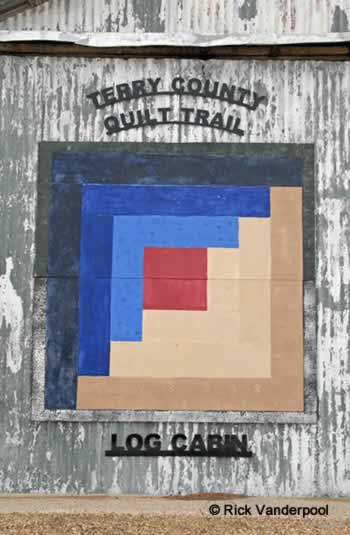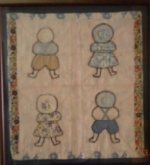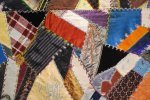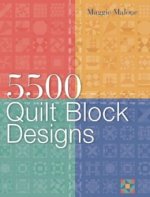Log Cabin
This post may contain affiliate links. Read the full disclosure policy here.
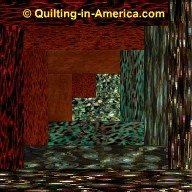 log cabin quilt block
log cabin quilt blockAmong the most popular traditional patchwork motifs, the Log Cabin block is one of the earliest blocks on record. Surprisingly easy to construct with a wide range of visually sophisticated pattern layouts, the block has endured the test of time because of its universal appeal. Incorporating unlimited variation, the block intrigues beginners and expert quilters alike.
Simple Versatility
Popular during the late 1800s, the Log Cabin block probably became a favorite block among early quilters because it required a minimal amount of cutting and gave them an opportunity to use utilize narrow scraps of fabric.
While its design is frequently associated with the pioneer spirit and ruggedness associated with log cabins themselves, by the end of the 1800s many Log Cabin quilts reflected the Crazy Quilt fad and were made in silk and velvet scraps. Even silk and velvet ribbons were used to make the "logs" in what became known as Ribbon Quilts.
Traditionally, the small center square of each Log Cabin block is either red or some other warm-color, representing the cabin hearth, and the surrounding light and dark strips represent the firelight and shadows around the hearth. An important practical reason for having red or other warm colors at the center of each block is because they retain visual strength and clarity when reduced in scale, thus preserving the identity of the block within the design.
The design of the block is simple -- a center block surrounded by strips of fabric, or "logs." By altering the way individual blocks are pieced and arranged into an overall pattern, an astonishing variety of designs can be created. additionally, the block's setting, color placement, scale, and types of materials used impact the final design.
Unlike most pieced patchwork patterns, the Log Cabin block does not need to be assembled using traditional piecing techniques. Rather, it may be stitched to a foundation -- usually a square of muslin or lightweight cotton. When stitched in this manner, the blocks are very stable and may be left unquilted, needing only to be backed and tied, or tacked.
There are several different ways to piece basic Log Cabin blocks. By far the most common and versatile version of the block is the Light-and-Dark, or spiral, construction. Not as common, yet simpler, is the Courthouse Steps variation. Piecing strips of fabric on the diagonal, rather than perpendicular to the center square, creates the challenging Pineapple variation.
As with many quilt blocks, there are regional names for this block and its many quilt design variations.
Names for Light-and-Dark designs include:
Barn Raising, Straight Furrows, Windmills, and Lightning;
and names for Pineapple designs include:
Maltese Cross and Windmill Blades.
